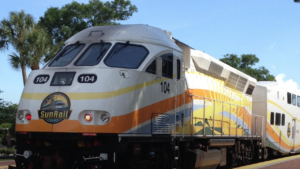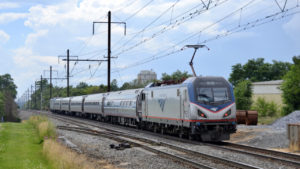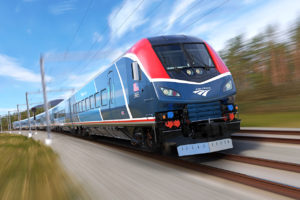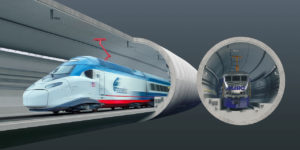Penn Station vs. Madison Square Garden
Written by David C. Lester, Editor-in-Chief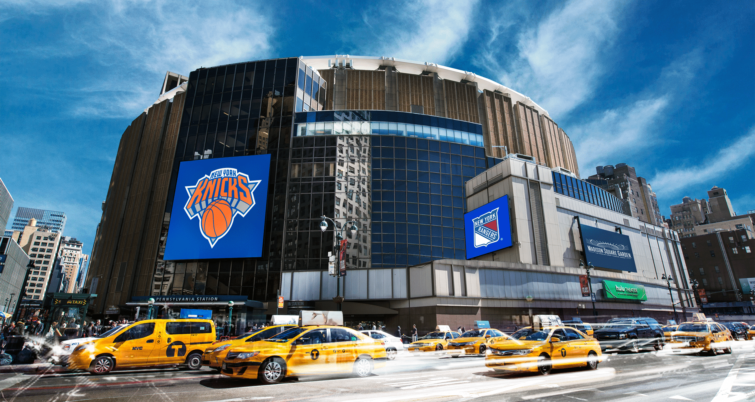
NEW YORK – It is generally agreed that one of the major indignities hurled at railroad history and American architectural history is the destruction of the Pennsylvania Railroad’s Pennsylvania Station in 1963.
The air rights above the station were traded by the railroad in exchange for a smaller underground station (built at no cost to the railroad) and an interest in revenue from the new Madison Square Garden complex that would be built above and adjacent to the property of the former station. Despite valiant efforts to save the station, the wrecking ball began to swing in the fall of the year that also saw the assassination of President John F. Kennedy.
Since that time, Penn Station and Madison Square Garden (MSG) have co-existed in the same spot, with many decrying the cramped and dour nature of the station that serves intercity rail passengers in the largest U.S. city. In June of this year, that co-existence came under fire in a report issued jointly by Amtrak, MTA, and New Jersey Transit. The report says, in essence, that Penn Station and MSG are no longer compatible, pointing out that since the time the “new” Penn Station and MSG were built, “the context and operating environment has changed dramatically, both for Penn Station and for MSG.” The report goes on to say that “The complex was built under 1960s building and safety codes and designed to accommodate approximately 200,000 daily pedestrian trips. Current estimates forecast daily trips will reach as high as 678,000 by 2038. As a result, the Station experiences regular overcrowding and substandard conditions. For its part, MSG was designed primarily as a sports venue. Since then, an explosion in concerts and events have made it one of the highest-grossing arena-sized entertainment venues in the world. It’s 1960s-era internal loading facility, however, is unable to accommodate modern tractor-trailers, and its integration with the Station has not been significantly updated.”
The report adds that “MSG’s site plan and loading arrangements may have been compatible with Penn Station and the surrounding community in the early 1960s. Today, however, MSG’s existing configuration and property boundaries impose severe constraints on the Station that impede the safe and efficient movement of passengers and restrict efforts to implement improvements, particularly at the street and platform levels . . .”
The Gardens’ ten-year operating permit comes up for renewal in July 2023. The three passenger agencies point out in their report that “The Railroads have begun discussions with MSG regarding the improvements envisioned in the [agencies’] Master Plan effort, but an agreement has not yet been reached. If MSG does not agree to take the necessary steps to ensure compatibility, the required finding of compatibility may not be able to be made by the City Planning Commission and the Railroads may recommend that the new special permit not be granted. The Railroads will continue their engagement with MSG in pursuit of an agreement that will enable the Railroads to achieve their goal of transforming Penn Station into a 21st-century, world-class facility that provides safe and accessible passage for MSG and Station users alike.”
You can find the compatibility report at https://www.amny.com/wp-content/uploads/2023/06/MTA-Amtrak-NJT-Penn-Station-Compatibility-Report-on-MSG.pdf. You can also read more about this issue in “The Way Things Work – Money, politics, and the public good in the fight over Penn Station and Madison Square Garden in the March 13, 2023 issue of The New Yorker, pp. 44-55.
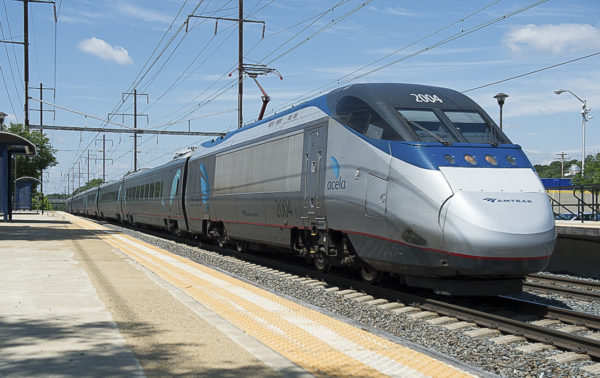
Amtrak Acela along the Northeast Corridor Photo by David C. Lester

